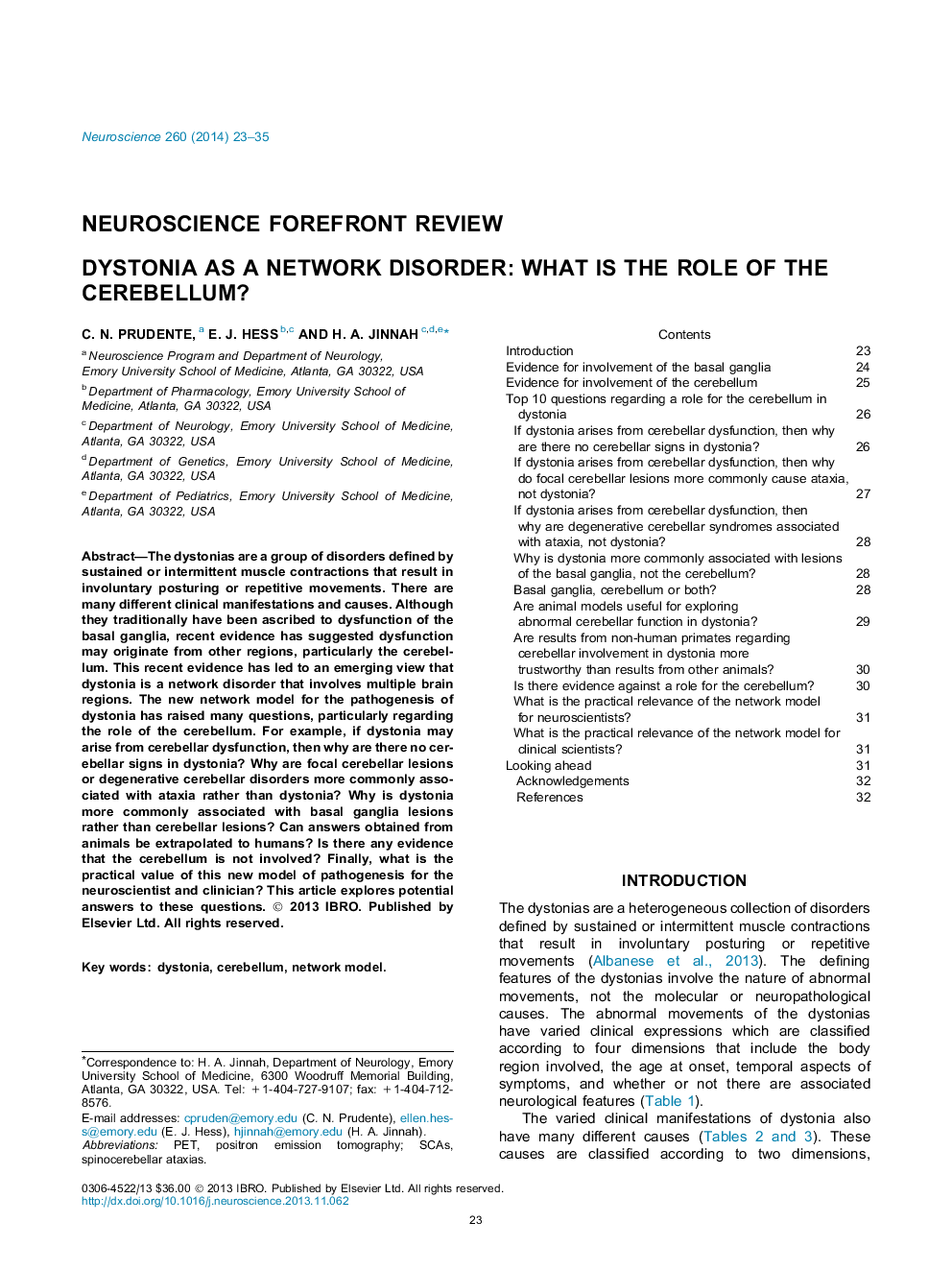| کد مقاله | کد نشریه | سال انتشار | مقاله انگلیسی | نسخه تمام متن |
|---|---|---|---|---|
| 6274077 | 1614816 | 2014 | 13 صفحه PDF | دانلود رایگان |

- There is increasing evidence that dystonia is a network disorder involving multiple brain regions.
- Regions involved include the basal ganglia, cerebellum, thalamus and cortex.
- Cerebellar involvement likely derives from abnormal output, not loss of output.
- The network model leads to several specific and testable hypotheses.
- The network model has direct implications for new therapies aimed at specific anatomical targets.
The dystonias are a group of disorders defined by sustained or intermittent muscle contractions that result in involuntary posturing or repetitive movements. There are many different clinical manifestations and causes. Although they traditionally have been ascribed to dysfunction of the basal ganglia, recent evidence has suggested dysfunction may originate from other regions, particularly the cerebellum. This recent evidence has led to an emerging view that dystonia is a network disorder that involves multiple brain regions. The new network model for the pathogenesis of dystonia has raised many questions, particularly regarding the role of the cerebellum. For example, if dystonia may arise from cerebellar dysfunction, then why are there no cerebellar signs in dystonia? Why are focal cerebellar lesions or degenerative cerebellar disorders more commonly associated with ataxia rather than dystonia? Why is dystonia more commonly associated with basal ganglia lesions rather than cerebellar lesions? Can answers obtained from animals be extrapolated to humans? Is there any evidence that the cerebellum is not involved? Finally, what is the practical value of this new model of pathogenesis for the neuroscientist and clinician? This article explores potential answers to these questions.
Journal: Neuroscience - Volume 260, 28 February 2014, Pages 23-35